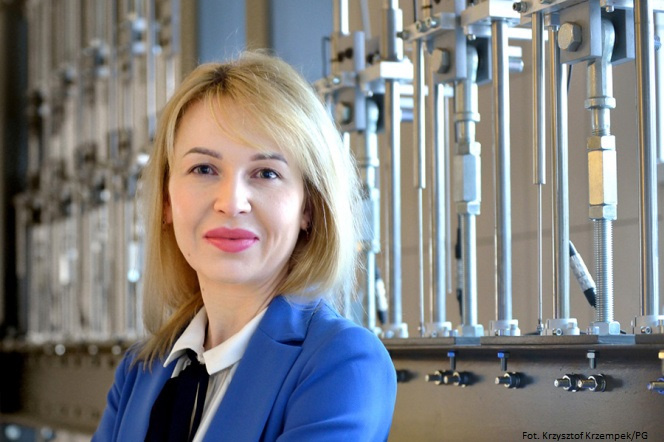Date added: 2021-05-25
New solutions in construction diagnostics

A series of algorithms for detecting, locating and estimating the size of damage in elements of engineering structures, developed by PhD, Eng. Beata Zima from the Department of Structural Mechanics, FCEE, enables effective detection of particularly dangerous subsurface damage (which may lead to secondary damage, e.g. corrosion centers) without interfering with the structure of the construction and the need to carry out reference measurements, so in a shorter time and at a lower cost than with currently available methods. What's more, it can be used both in constant monitoring systems and during casual inspections.
– I have proposed a new, proprietary method based on wave propagation for the precise determination of the total surface area of an undamaged adhesive joint. It is based on the appropriate interpretation of anomalies in the propagation of the wave caused by the interaction with the damage, says PhD Beata Zima. - To assess the condition of a given element of the structure, it is enough to attach the sensor, measure the signal and interpret it. Although the solution has been developed on reinforced concrete structures, it can be used especially wherever we do not want to destroy something during the test, e.g. in historic buildings.
As the scientist emphasizes, the method of wave propagation allows detecting damage over a relatively large area.
- There are other ultrasonic methods, but they usually detect damage only at a given point, so to examine a relatively large area you need to use multiple sensors. The method that I propose is to excite waves at one point and monitor the entire area of the propagating disturbance. It works more or less like when you throw a stone into water and it begins to propagate a disturbance in the form of a circular wave on the water surface. If a wave hits an object, such as a piece of wood, the disturbance changes the way it propagates. My goal is to find these anomalies, the dissemination of the disorder and assess where there is damage, fracture, corrosion or delamination in the structure - explains PhD Beata Zima.
The researcher also investigated the influence of the configuration and the number of sensors on the effectiveness of damage detection.
– We managed to improve the theoretical solution known from the available literature concerning the changes in the amplitude of the wave depending on how it propagates. This made it possible to propose an algorithm for detecting damage in the form of cracks or scratches and determining their size with the use of only three sensors, which until now was the minimum necessary number for unambiguous localization of a point damage - emphasizes PhD Beata Zima.
PhD, Eng. Beata Zima will continue work on the improvement and development of new diagnostic processes as part of a project financed by the National Science Center (Miniatura competition) entitled "The impact of the presence of damage on the dynamic response of concrete elements reinforced with non-metallic composite bars in the combined time and frequency domain".
– In my previous works, I used vibrations of very high frequencies (100-200 kHz), and in this project I will use much lower frequencies. This will allow me to diagnose the entire object, while the wave propagation method can detect specific damage. The methods I have developed will be complementary. I hope that on the basis of this research it will be possible to create entire diagnostic systems in the future - says PhD Beata Zima.
For her series of ten publications entitled "Analysis and use of the phenomenon of wave propagation to identify mechanical damage" PhD, Eng. Beata Zima was awarded the prize of the Gdańsk Scientific Society and the Mayor of Gdańsk for young scientists for 2020 (Department IV of Technical Sciences).



